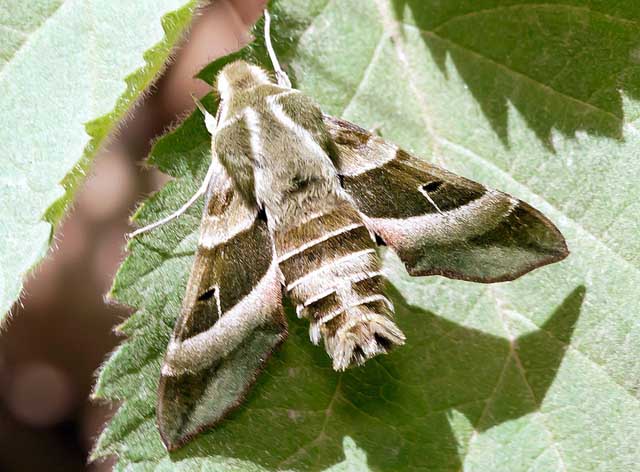Siskiyou County
Sphingidae
Proserpinus clarkiae, Ash Creek Road in Siskiyou County, northern California,
May 10, 2012, courtesy of Rob Santry
|
|
Updated as per personal communication with David Wikle May 26, 2005 Dedicated as per personal communication from Rob Santry, (Proserpinus clarkiae), May 12, 2012 Updated as per James P. Tuttle's The Hawk Moths of North America, May 12, 2012 Updated as per BAMONA, May 12, 2012 |

Proserpinus clarkiae, Ash Creek Road in Siskiyou County, northern California,
May 10, 2012, courtesy of Rob Santry
It is hoped that this checklist, with the thumbnails and notes, will help you quickly identify the moths you have encountered.
A WO" after the species name indicates that I have no confirmed reports of this species in Siskiyou County, but I (William Oehlke) expect that this moth is present.
Many thanks to David Wikle (DW) who has provided some sighting information.
Many thanks to Rob Santry who has sent the beautiful image of Proserpinus clarkiae at the top of the page.
A USGS indicates the moth is reported on the USGS website and/or in Moths of Western North America, #2. Distribution of Sphingidae of Western North America, revised, an excellent little booklet available through Paul Opler.
Please help me develop this list with improved, documented accuracy by sending sightings (species, date, location), preferably with an image, via email to Bill Oehlke.
Please also send sightings to BAMONA, and excellent online resource.
Sphinginae subfamily
Smerinthini Tribe:
Macroglossinae subfamilyDilophonotini Tribe:
Philampelini Tribe:
Macroglossini Tribe:
|
Hyles lineata- (1)
Sphinx chersis- (1)
Sphinx drupiferarum- (1)
Sphinx perelegans- (12)
Paonia myops- (1)
Ash Creek Road in Siskiyou County, Northern California on 5/10/2010
Eumorpha achemon- (4).